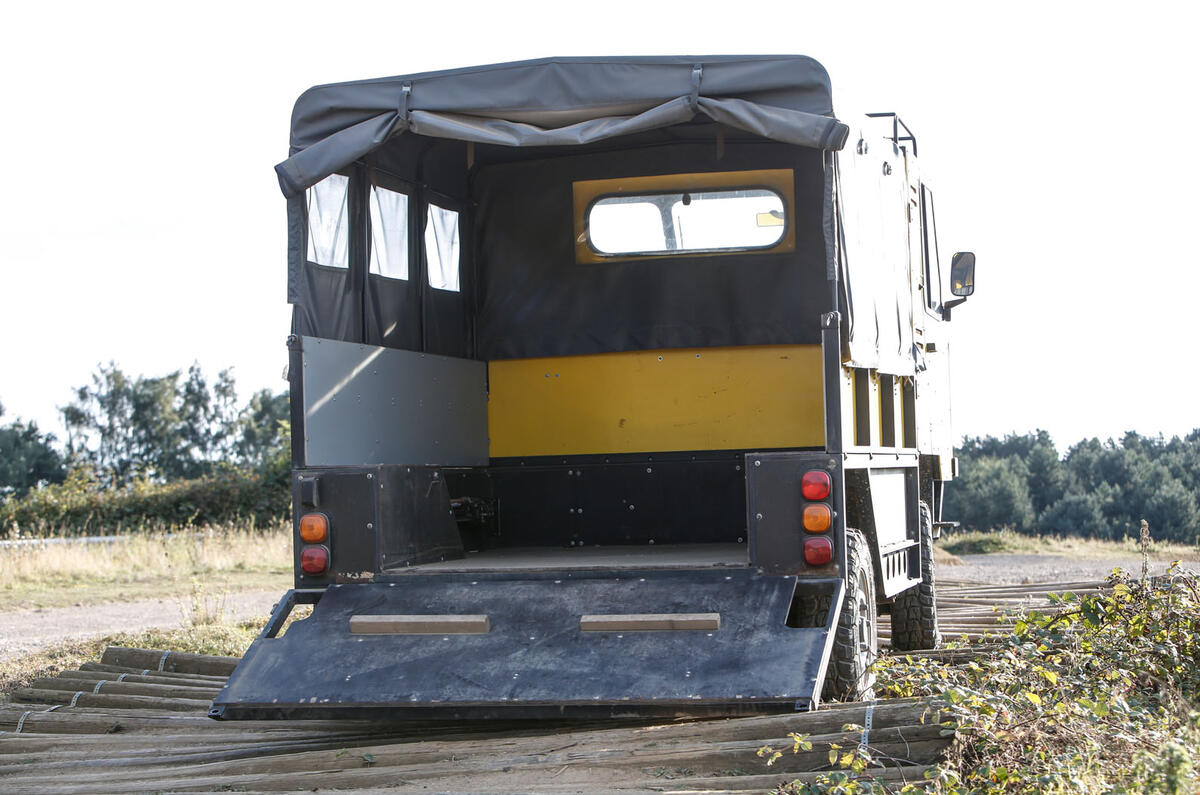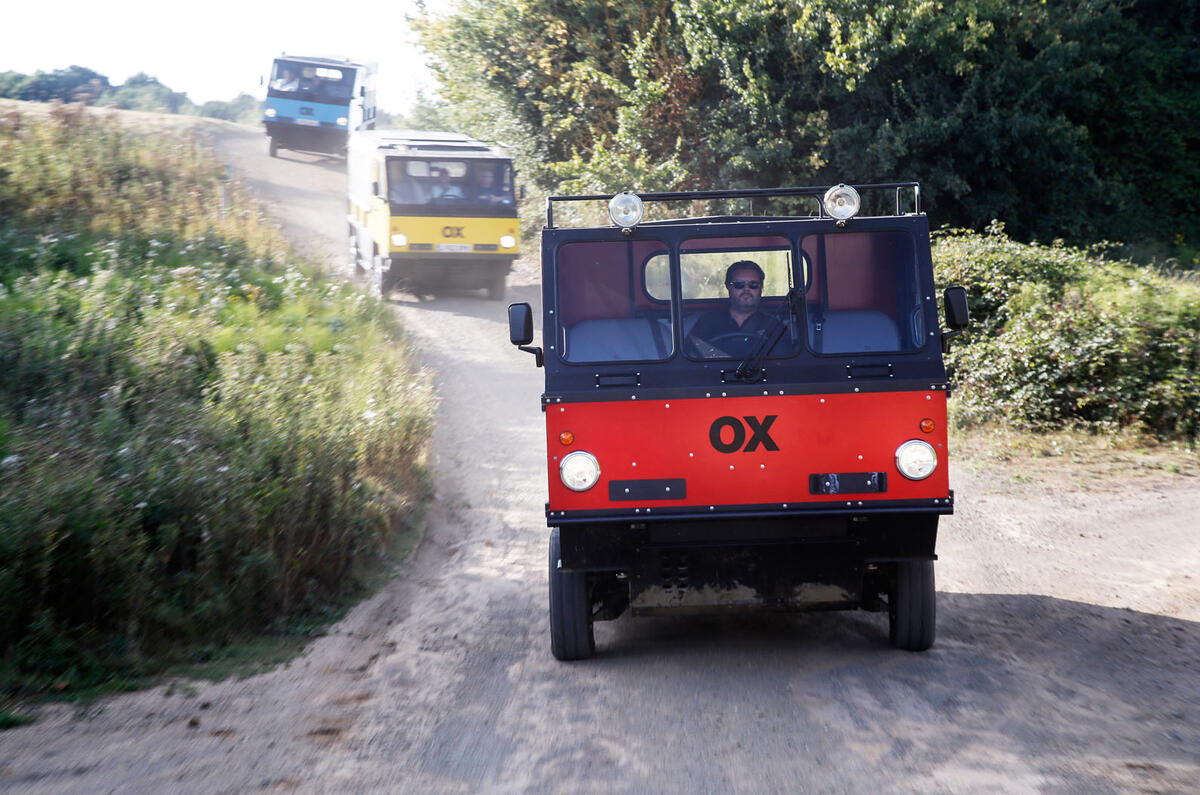The world’s first flatpack truck, which was designed by Gordon Murray to be made in the UK and built up quickly and easily in emerging markets, has been commissioned for build by Shell and will be taken to India for demonstrations.
The Ox, which was revealed in driving prototype form by its charitable backer, the Global Vehicle Trust (GVT), in 2016, was being funded by through crowdfunding (here's the page). Money was used to make modifications to the first version, including a new, more hard-wearing gearbox, powertrain tweaks, a more powerful cooling system, more durable steering components and a 200mm extension to the truck's wheelbase to make it perform better off-road.
The target for funding was £450,000, with one backer pledging £25,000 and another £10,000.
Now, oil and gas giant Shell has helped to move the project forward by ordering a bespoke example to India, where it will demonstrate the vehicle's abilities – which include carrying payloads of up to 1900kg or seating up to 13 people – with the intention of drawing in potential customers.

“Shell is eager to play a role alongside others in developing and promoting mobility solutions in developing regions," said Huibert Vigeveno (above, middle), executive vice president of Shell Global Commercial.
"The Ox to India demonstration will have the concept validated and discussed on the ground in a real-world setting. We know limited mobility in hard-to-reach communities in developing economies can restrict access to basic services and limit the effectiveness of efforts to improve quality of life."
Gordon Murray has won RAC's Dewar Trophy for his work on the Ox truck - read about it here












































































Join the debate
Add your comment
Best truck tool boxes
For example, if we're talking about a large box, maybe a 20-foot long truck, we'd see lots of options and they might look like this https://engineswork.com/products/tools/best-truck-tool-boxes.html:$10,000 - 5 foot and 1/2"$10,000 - 6 foot and 5/8"$15,000 - 10 foot and 1/4"$16,500 - 15 foot and 1/4"A full-on 15+ foot, 6-foot, and 1/4" box might be considered a "bustard tool box" when compared to something that's 2 feet wide at the widest part - perhaps a 4-foot wide tool box for work that's being taken apart for the job site or an 8-foot wide box that would be the minimum for a garage repair operation.To get a handle on things properly, it helps to look at these general categories of tool boxes and to see what size they can have the top half cut off the lid. But the basic idea is always the same: make sure the material or material combination will fit between two bolts. That usually means that a box with three or more bolts is usually too small, and one or two is too large
"...will be taken to India for demonstrations"
Erm, why? It's a country with a large indigenous vehicle manufacturing industry and various JVs, producing around 800k commercial vehicles a year (around 10x the number the UK produces). Taking this thing there for 'demostrations' has a bit of a whiff of naivety and/or arrogance.
Emerging markets
I hope that no crash testing is require, I hate to see this clever vehicle becomes dust and ashes. The world must be richer in order to make emerging market people more survivable.